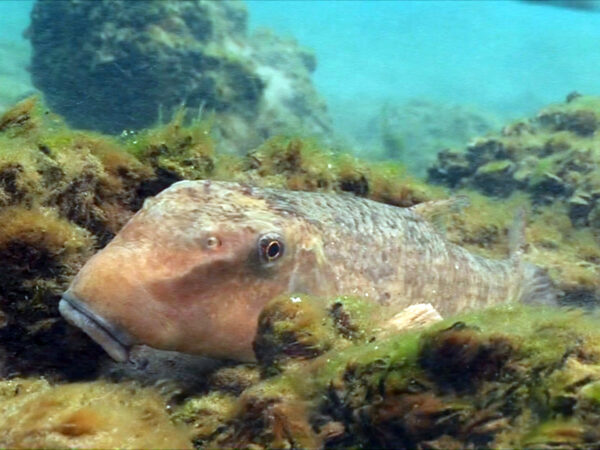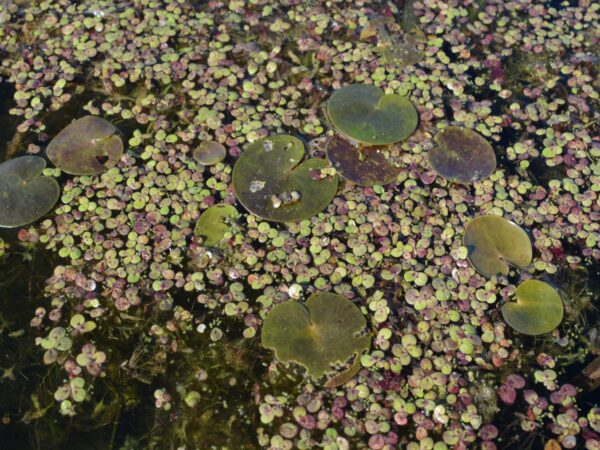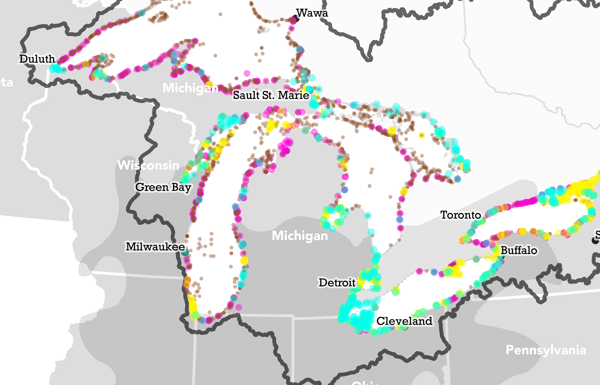
The sucker maybe not be a popular recreational fish, but the Great Lakes native works hard to contribute to the ecosystems of all five Lakes as well as the creeks and streams feeding into them.
In the summer of 2021, Great Lakes Now covered some of Karen Murchie’s research into this Great Lakes fish.
Watch the segment here:
Murchie is the director of freshwater research at Shedd Aquarium, and she’s conducting the first long-term study into the migration patterns of suckers. For five years, Murchie collected data from 17 areas on shores of Lake Michigan and Lake Superior with the help of citizen scientists.
They’ve already found that suckers like to come back to the same location to spawn, and they’ve been recording the sounds of that. A research paper could be submitted and possibly published next year.
Great Lakes Now recently checked in with Murchie to see what’s changed in the time since the segment was filmed.
The following interview was edited for length and clarity.
Great Lakes Now: What sort of updates have there been in your research since the segment aired in June?
Karen Murchie: As you recall, 2021 was the first year we used ecoacoustics – recording the soundscape – to see if we can distinguish unique sounds associated with sucker spawning (GLN: click to listen!). I have been lucky to work with Dr. Aaron Rice of Cornell University to learn their amazing software called Raven Pro to analyze the data. We’re still in the process of going through all of the recordings collected this year, but it is really fun for me to acquire another tool in my toolbox for understanding sucker ecology.
I continue to look at trends over the years for the returning white suckers to the creek they were tagged in along with data collected by the volunteers at sucker spawning tributaries in Illinois, Wisconsin and Michigan.

Dr. Karen Murchie of Chicago’s Shedd Aquarium, in the field to study the migration of suckers. (Great Lakes Now Episode 1026)
GLN: Has being on Great Lakes Now changed anything for you or for the program?
KM: I am really appreciative of the spotlight that Great Lakes Now has helped me place on the importance of suckers to the ecosystem and Great Lakes fisheries. The segment itself is a celebration of these amazing migratory fishes and how so many people are volunteering their time to collect data on when suckers start to appear in the spring and how long they see them in the tributaries their monitoring. It is easy for me to send a link to the video as a communication piece to others to share this research, and it is a good news story.
GLN: We’ve hit winter. How does that impact studying the suckers?
KM: To date, the main field research window for Shedd’s sucker research is in the spring, related to spawning migrations. The rest of the year is spent analyzing data, looking for funding opportunities to support the research and planning for future work.
GLN: Do you have any plans yet for when you will release the results of your research?
KM: The volunteer-based program documenting the timing of sucker migrations requires many years of data to discern trends so it will be a few more years before those results are out, but there is enough data now to discuss spawning site fidelity of white suckers – results of which are based on tagged fish returning over the years to a monitored creek. The ecoacoustics will be ready to submit to a journal for publication in 2022.
GLN: What other projects do you have in the works, both relating to the suckers and other creatures?
KM: I’m excited to say that in 2022 we’ll be working with a great group of collaborators to understand movements of white suckers outside of their spawning season. This will give a new glimpse into the day-to-day life of suckers and what habitats they use. This will be in addition to the long-term citizen science sucker phenology program, and I’ll also aim to collect more sucker spawning sounds to add to the catalog.
Outside of the migratory fishes research, Shedd continues to fill an important role in conservation research on native freshwater mussels, amphibians and habitat restoration efforts in the Chicago River. One way to keep your finger on the pulse of our activities is to follow us on Twitter.
Catch more news on Great Lakes Now:
The Suckers: Great Lakes’ “best supporting fishes” are important to the food web
Public Resource: Around the Great Lakes, everyday people help make science possible
Citizen Science Opportunities: How can you get involved in scientific research?
Featured image: Suckers live in all five of the Great Lakes, and they swim upstream to spawn every spring. (Photo courtesy of Shedd Aquarium and Karen Murchie)




